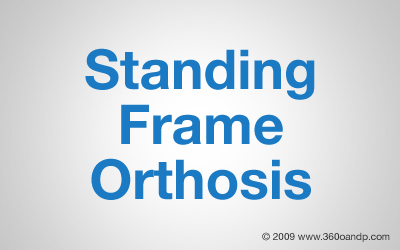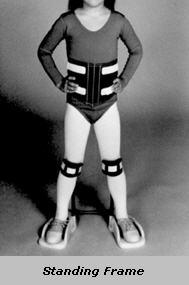

The purpose of the Standing Frame orthosis is to provide an upright stance for the patient freeing the upper limbs for desired activities. This erect posture improves kidney and bladder function, cardiorespiratory function, enhanced bone strength due to the effects of gravity on the skeletal system.
The orthosis can be prefabricated or custom fabricated, but the majority currently are prefabricated and consist of an upright frame, chest-abdominal support, knee supports and footplates with attachments to hold the feet.
There are several types of standing frames, as follows:
§ Passive Design which remains in one place and cannot be self-propelled.
§ Dynamic Stander which allows self-propellance and used if the user has enough strength.
§ Active Stander creates a reciprocal movement of the arms and legs while standing.
§ Standing frames are available for both children and adults.
ASSOCIATED CONDITIONS
§ Spinal Cord Injury
§ Traumatic Brain Injury
§ Cerebral Palsy
§ Spina Bifida
§ Muscular Dystrophy
§ Multiple Sclerosis
§ Stroke
§ Post Polio Syndrome
WEARING PROTOCOL
Your physician will provide wearing protocol particulars for the unique needs of the individual. It is suggested that the Standing Frame be used as often as possible.
DON AND DOFF
§ With the patient in the supine position, the frame can be strapped into place.
§ Lift the patient to upright position
§ Tighten the knee straps and abdominal pad to comfort.